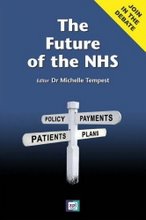Dr. Muhammad Yunus, (DOB June 28, 1940), was the third born of 14 children in Bangladesh. As a banker and economist, he developed of the concept of microcredit, the extension of small loans to entrepreneurs, too poor to qualify for traditional bank loans.
He first got involved fighting poverty during the Bangladesh 1974 famine. He discovered that very small loans could make a disproportionate difference to a poor person. His first loan consisted of $27 US from his own pocket, to a women who made bamboo furniture. Traditional banks had not been interested in offering her such a tiny loan. However, he found that by loaning her money, with a very reasonable interest rate, she was able to finance her entire family. His revolutionary discovery was that by loaning money, rather than just giving money, he discovered the cycle of poverty could be broken.
In 1976, Yunus founded the Grameen Bank (Grameen means "of rural area", "of village") to offer loans to poor Bangladeshis. To ensure repayment, the bank uses a system of "solidarity groups", where small informal groups apply together for loans, and its members act as co-guarantors. As it has grown, the Grameen Bank has also developed other systems of alternate credit that serve the poor. In addition to microcredit, it offers education loans, housing loans, financing for fisheries and irrigation projects, venture capital, textiles, and other activities, along with the other banking services, such as savings. In 2006, he and the bank were jointly awarded the Nobel Peace Prize, "for their efforts to create economic and social development." The Grameen model of micro financing has been so inspiring that it has been emulated in 23 countries.
Quotes from Dr Muhammad Yunus
"I was teaching…and feeling helpless. I teach beautiful theories of economics, and people are going hungry," he said. "Forget about those theories. I'm a human being, I can go and touch another person's life.'"
He advocates that by fixing poverty, you are also attacking a root cause of terrorism:
“We must address the root causes of terrorism to end it for all time, I believe putting resources into improving the lives of poor people is a better strategy than spending it on guns
.”























